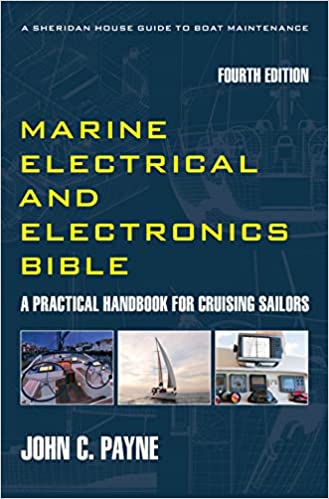Boat Diesel Generator
The majority of boat diesel generator are single phase, with three phase machines being used on much larger vessels, so we will not cover those here. The majority of boat diesel generators come complete with sound shields, although some have this as an option only and only require external connection of cooling water, fuel, electrical and exhaust systems. Almost plug and play with a few challenges to get there. What is big for small yachts is the shrinking in physical size, and this is typical of inverter type generators.
The Marine Electrical Electronics Bible is now out, buy and save money, make your boat more reliable and be self sufficient.Boat Diesel Generator
Some of the important design factors of a boat diesel generator are the stability of the output voltage, the stability of the frequency, the quality of the output waveform, and the ability to withstand high starting currents. All boat diesel generator units have similar performance levels. Boat generator diesels generally have the same principles and requirements as those for main propulsion diesels and in practice they often operate for much longer hours than main engines.
Output Ratings of a Boat Diesel Generator
The power output is stated in either kVA or kW ratings, this can be confusing so what do they mean?
1. The kVA Rating. The (Kilo Volt Amp) kVA rating is the power output, which is the current multiplied by voltage to give volt amps, and divided by 1000 to give a KiloVoltAmp (kVA) rating.
2. The kW Rating. The Kilowatt rating is the kVA rating multiplied by the power factor, which is typically 0.8. This is the actual power output.
Boat Diesel Generator
What is power factor (PF) you might ask? Power factor is simply defined as being the ratio of working or useful power in kilowatts (kW), to apparent power, which is measured in kilo Volt Amperes (KVA). It is also defined as the phase relationship between current and voltage in an AC electrical circuit. In perfect conditions, the voltage and current are what is called “in phase” with each other and the power factor is zero.
When reactance is introduced into the circuit, such as an electrical motor load, the voltage and current become out of phase, so that during any cycle the current is negative, and the voltage positive. The resultant value is less than the volt amp value. Inductive reactance causes current to lag the voltage. This will be an electrical angle between 0 and 90°. Resistive loads are said to be in phase, with no angle of difference and these are termed unity power factor. In electrical circuits, capacitive reactance cancels out inductive reactance.
Power Factor = Real Power (kW) ÷ Apparent Power (kVA)
What is real power? This is quantity of power in kW that is used to power your boat equipment. What is apparent power? This is sometimes called demand, which is a measure of the quantity of power used to operate your boat machinery and is calculated by multiplying (kVA = V x A).
To use an often used beer analogy. Pour a bottle of beer into a glass. The whole glass is the Apparent Power in kVA. At the top of the beer is a layer of foam or froth and this is the Reactive Power in kVAR, the actual beer below that is the Real Power in KW
Boat Diesel Generator Speeds
What about the boat diesel generator speed? Some are 1500/1800 rpm and others 3000/3600 rpm? Frequency and specified diesel engine speed depend on the number of poles within the alternator.
Two-pole machines generate one cycle per revolution, and require an engine speed of 3600 rev/min for 60 hertz and 3000 rev/min for 50 hertz.
Four-pole machines generate two cycles per revolution, and only require 1800 rev/min for 60 hertz. Many people prefer a lower revving engine that is used on a 1800 rpm machine but they tend to be bigger and heavier, whereas the 3600 rpm machines are smaller and lighter.
Boat Diesel Generator
To produce 60Hz electricity, the engine operates normally at 1800, or 3600 rpm (rotations per minute). 50Hz gensets run at around 1500, or 3000 rpm. Four-pole generators, running at 1800 rpm for US power standards or 1500 rpm for European standards, are most common. But technology has come up with some new solutions.
The Fischer Panda
iSeries Generators are using a new variable speed technology which allows engine
speed regulation with respect to the electrical loading. These are called inverter
generators and produce AC which is rectified and then inverted back to pure
sine wave AC. An electronic governor can
then control engine speed whilst still maintaining stable output frequency. More
great boat diesel generator options. More great generator information.
